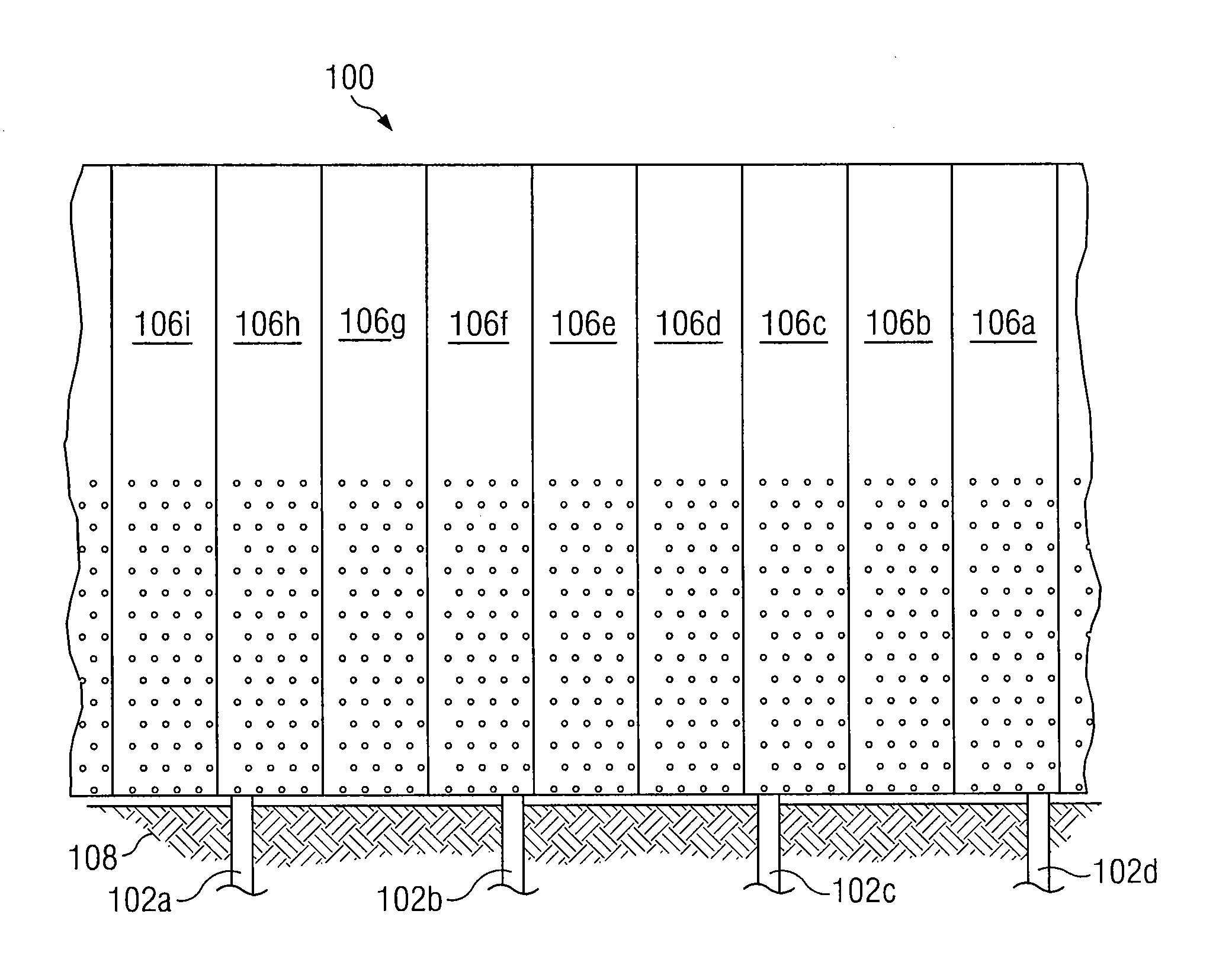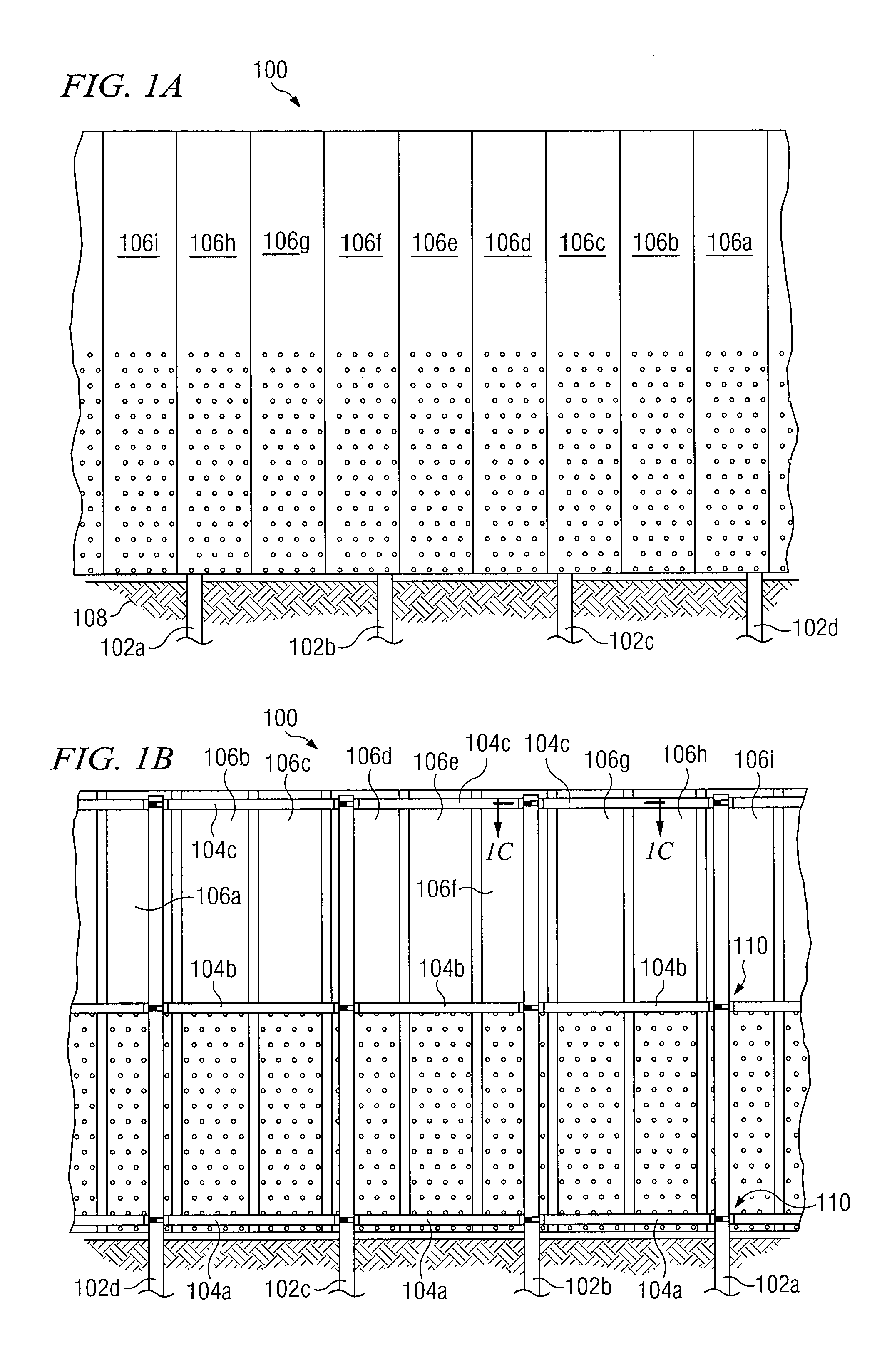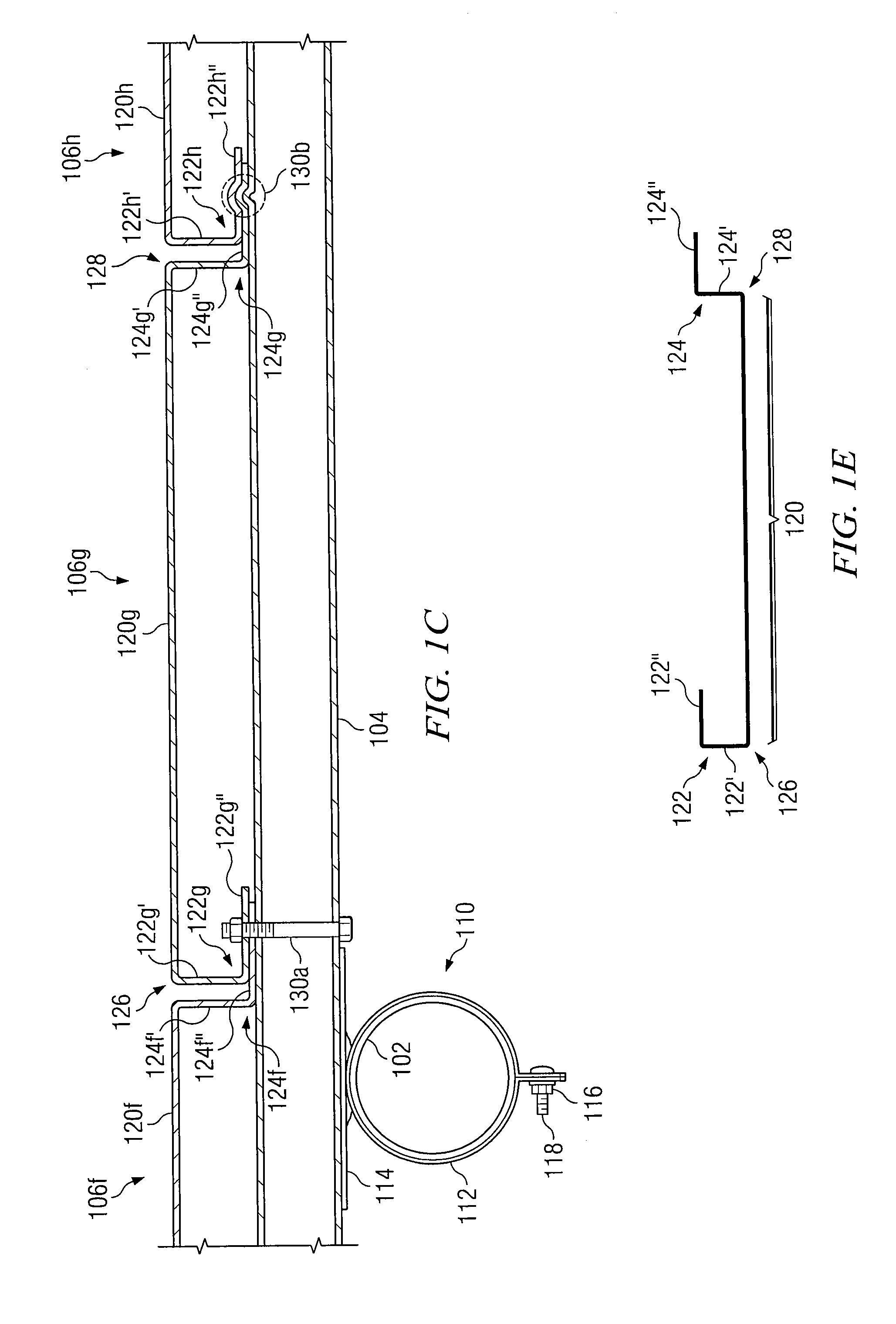Panel Fence System and Method
a panel fence and fence technology, applied in the field of fence systems, can solve the problems of ineffective prevention of attempted breaches of conventional fences, prohibitively expensive construction of alternative conventional fences along significant length boundaries, etc., and achieve the effect of reducing the disadvantages and eliminating the problems of previous fence systems
- Summary
- Abstract
- Description
- Claims
- Application Information
AI Technical Summary
Benefits of technology
Problems solved by technology
Method used
Image
Examples
Embodiment Construction
[0016]FIGS. 1A-1E illustrate an example panel fence system 100, according to certain embodiments of the present invention. Fence system 100 may include a number of support members 102 (referred to throughout the remainder of this description as posts 102 for simplicity) and a number of rails 104. Each rail 104 may be attached to at least one post 102 such that the rail 104 extends across the at least one post 102 to which it is attached. Fence system 100 may also include a number of panels 106 each secured to one or more rails 104.
[0017]In general, fence system 100 may deter and / or substantially prevent movement across a particular boundary. Example boundaries include perimeters of critical assets, perimeters of privately-owned real estate, national borders, or any other suitable boundaries. Certain individuals attempting to cross the particular boundary may attempt to breach fence system 100 in a number of ways, such as by climbing over fence system 100, cutting through fence syste...
PUM
 Login to View More
Login to View More Abstract
Description
Claims
Application Information
 Login to View More
Login to View More - R&D
- Intellectual Property
- Life Sciences
- Materials
- Tech Scout
- Unparalleled Data Quality
- Higher Quality Content
- 60% Fewer Hallucinations
Browse by: Latest US Patents, China's latest patents, Technical Efficacy Thesaurus, Application Domain, Technology Topic, Popular Technical Reports.
© 2025 PatSnap. All rights reserved.Legal|Privacy policy|Modern Slavery Act Transparency Statement|Sitemap|About US| Contact US: help@patsnap.com



